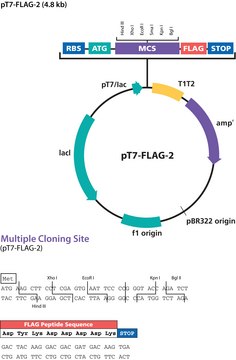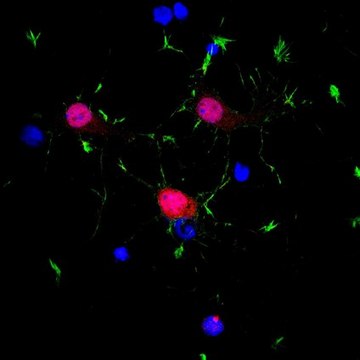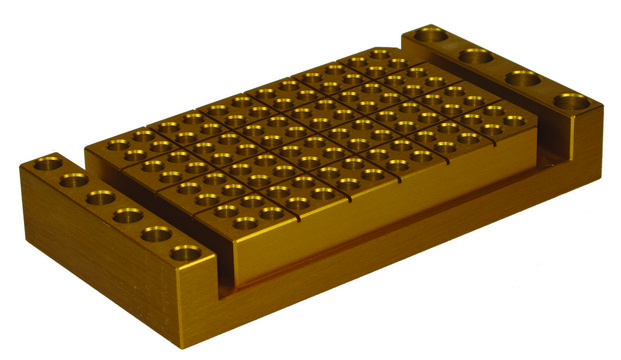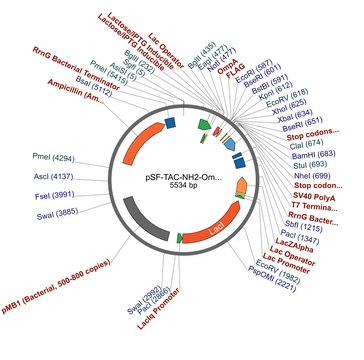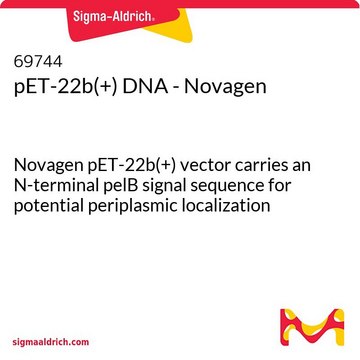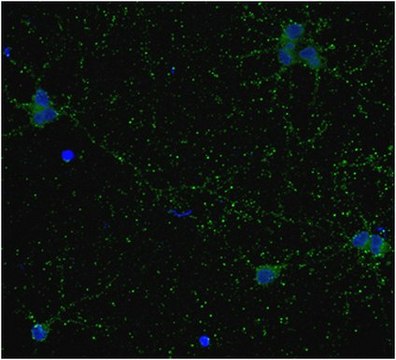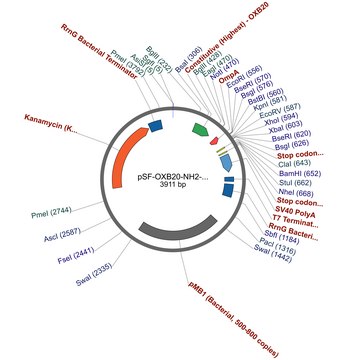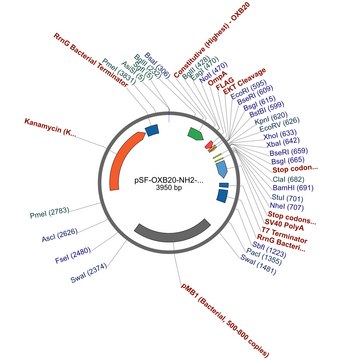OGS3099
PSF-OXB20-NH2-OMPA - OMPA SECRETION PLASMID
plasmid vector for molecular cloning
Synonym(s):
cloning vector, expression vector, molecular cloning vector, plasmid, plasmid vector, snapfast vector, vector
About This Item
Recommended Products
recombinant
expressed in E. coli
form
buffered aqueous solution
mol wt
size 3911 bp
bacteria selection
kanamycin
Origin of replication
pUC (500 copies)
Peptide cleavage
no cleavage
Peptide tag location
N-terminal
Promoter
Promoter name: OXB20
Promoter activity: constitutive
Promoter type: bacterial
reporter gene
none
Secretion signal
OmpA
1 of 4
This Item | OGS3161 | OGS3160 | OGS3067 |
|---|---|---|---|
| peptide tag location N-terminal | peptide tag location N-terminal | peptide tag location N-terminal | peptide tag location N-terminal |
| bacteria selection kanamycin | bacteria selection kanamycin | bacteria selection kanamycin | bacteria selection kanamycin |
| origin of replication pUC (500 copies) | origin of replication pUC (500 copies) | origin of replication pUC (500 copies) | origin of replication pUC (500 copies) |
| peptide cleavage no cleavage | peptide cleavage no cleavage | peptide cleavage no cleavage | peptide cleavage EKT |
| promoter Promoter name: OXB20 | promoter Promoter name: OXB20 | promoter Promoter name: OXB20 | promoter Promoter name: OXB20 |
| form buffered aqueous solution | form buffered aqueous solution | form buffered aqueous solution | form buffered aqueous solution |
General description
About the Peptide Tag:This plasmid contains an Outer Membrane Protein A (OmpA) secretory signal peptide (SP) to allow proteins to be exported from the cytosol. During translocation from the cytosol the signal peptide is removed from the protein by endogenous proteases.
Promoter Expression Level: PSF-OXB20-NH2-OMPA - OMPA secretion plasmid contains a constitutive bacterial promoter that does not require induction. It is the strongest bacterial promoter we sell and this can cause solubility and expression problems with some proteins. We also offer a range of other bacterial promoters that are compatible with this plasmid and are available on request.
OXB20-NH2-OMPA - OMPA secretion plasmid is an N-terminal OmpA secretory signal peptide plasmid. This bacterial expression vector has no protease or other tags.
Sequence
Analysis Note
related product
Storage Class Code
12 - Non Combustible Liquids
Flash Point(F)
Not applicable
Flash Point(C)
Not applicable
Regulatory Information
Choose from one of the most recent versions:
Certificates of Analysis (COA)
It looks like we've run into a problem, but you can still download Certificates of Analysis from our Documents section.
If you need assistance, please contact Customer Support.
Already Own This Product?
Find documentation for the products that you have recently purchased in the Document Library.
Articles
SnapFast™ plasmid system eliminates restriction sites in DNA sections, ensuring flexibility and functionality in molecular cloning..
Versatile sequencing primers enable sequencing of inserts in plasmids at specific positions, aiding in molecular biology research.
Plasmid platform with interchangeable DNA components offers versatile research tools for genetic studies.
Our team of scientists has experience in all areas of research including Life Science, Material Science, Chemical Synthesis, Chromatography, Analytical and many others.
Contact Technical Service
